By Michael D. Hull
From the Supermarine Spitfire to the North American P-51 Mustang, and from the Soviet Yak series to the Vought F4U Corsair, the Allies were able to field a formidable array of fighter planes against the Axis powers in World War II. There were a number of other first-rate fighters that proved to be more than a match for their German, Italian, and Japanese foes. Yet, one of these Allied planes, which emerged as among the deadliest during the second half of the war, ironically almost never entered service because of myriad problems in its development. This was the big British Hawker Typhoon, a low-wing, all-metal monoplane with a powerful single engine, bubble canopy, and the capacity to carry machine guns or 20mm cannons, plus bombs and rockets. Few Allied planes in World War II overcame more teething troubles or were initially more unforgiving, yet which aspired to a combat role in which they performed more spectacularly. Though the Typhoon failed to make the grade as a pure fighter, it brought a new concept to air warfare, and absolutely excelled at the Battle of the Falaise Pocket in eastern France. (Read more about the planes and aircraft that defined the Second World War inside WWII History magazine.)
The Hawker Typhoon: Brain Child of the Famous Sydney Camm
Design of the Typhoon was initiated by the tall, irascible Sir Sydney Camm, one of the great aircraft designers of all time. A Windsor-born, self-taught carpenter’s son, he worked for the Martinsyde Company before joining Hawker Aircraft and becoming its chief designer in 1925 at the age of 32. Camm designed several highly successful single-engine aircraft for the Royal Air Force, most notably the Fury, Hart, and Demon biplanes and the famous Hurricane, and from then on, Hawker rose to the forefront of the British aviation industry.
Camm anticipated in 1937 that the Air Ministry would soon be seeking a successor to the Hurricane, which was to distinguish itself in the Battle of Britain and other theaters of operation. Well aware of the ascendancy of German air power, it was reasoned in Whitehall that the RAF needed a new generation of interceptor, a 12-gun fighter with an engine promising to deliver twice the power of a Rolls-Royce Merlin.
In January 1938, the far-sighted Air Ministry issued Specification F.18/37 calling for a replacement aircraft for both the Hurricane and Reginald J. Mitchell’s legendary Spitfire. The new plane would have, above all, a top speed exceeding that of contemporary bomber types (over 400 miles an hour) at altitude. Its armament would consist of no fewer than a dozen 7.7mm Browning machine guns. Hawker Aircraft Co.’s early interest in the project was rewarded with a contract for two designs, each of which would have two prototypes.
One of these was powered by Rolls-Royce’s new X-configuration Vulture, and the other by a Napier H-type Sabre powerplant. Both engines were large, 24-cylinder designs expected to produce about 2,000 horsepower. Both airframes were all metal with tubular framework for the front half of the fuselage and an alloy monocoque at the rear. An equally robust one-piece wing was supported by a sturdy widetrack undercarriage. The wingspan was 41 feet, seven inches.
The main differences between the two prototype aircraft were related to their differing engines. The first Vulture-engined machine, named Tornado, had a Hurricane-type ventral radiator, while the Sabre-engined Typhoon had the characteristic “chin” radiator arrangement. The Vulture development proceeded at a faster pace, and the Tornado was the first to fly, on October 6, 1939, a month after the outbreak of war. The Typhoon prototype took to the air for the first time on February 24, 1940.
But powerplant and other problems soon emerged. A routine test of the first Typhoon prototype on May 9, 1940, almost ended in disaster when the fuselage suffered a structural failure in flight. A month’s development work was lost before an investigation and remedial action put the prototype back on the flight line.
Orders were placed for 500 Tornados, 250 Typhoons, and another 250 of whichever type proved the most successful. Though both were dogged by problems with engine reliability, planning went ahead for production by Gloster Aircraft Co. (Typhoon) and A.V. Roe Co. (Tornado). But Britain soon had her back to the wall as German forces overran the Low Countries and France in the spring of 1940. Development of the critically needed interceptors had to take second place while the Air Ministry demanded the manufacture and delivery of Hurricanes, Spitfires, and Merlin engines for the fateful Battle of Britain that summer, when RAF Fighter Command defeated the German Luftwaffe and staved off the planned invasion of England.
The Typhoon Enters Service
The first flight of the second Typhoon did not take place until May 3, 1941. This plane incorporated several improvements, including four 20mm cannons in place of machine guns and a larger fin and rudder to increase directional stability. Progress was made, and a production Typhoon flew later that month. Built by Gloster Aircraft at its Hucclecote, Gloucestershire, plant, this was the first of 110 Typhoon Mark IAs, equipped with machine guns due to a shortage of cannon-feed mechanisms. All subsequent Typhoons—there would be 3,205 in all—would be cannon-armed Mark IBs.
Meanwhile, the Tornado program was cancelled after being plagued by serious engine failures. Only one production machine was ever completed.
Tactical trials with the Typhoon were started in September 1941. In comparative flights with a Spitfire Mark VB, the Typhoon reached a top speed that was 40 miles an hour faster at 15,000 feet and faster still at lower altitudes. The new fighter was less agile than the smaller, lighter Spitfire, but it was felt that its speed would make up for the deficiency.
The first production Typhoons began to enter RAF service with No. 56 Squadron in September 1941. They were operational from May 1942. But soon after the deliveries it became apparent that the Typhoon still had flaws, some serious and some minor. Fatigue failure at a rear fuselage joint was responsible for the loss of the complete tail units of an alarming number of planes. Carbon monoxide leaking into the cockpit was blamed for a fatal crash in November 1941. Though the cockpit sealing was improved, the fumes were never fully eradicated, and Typhoon pilots had to fly with oxygen masks in place.
The plane had poor rearward visibility that was eventually corrected with a new teardrop canopy. Meanwhile, as more accidents claimed both RAF fliers and Gloster test pilots, the Typhoon was still plagued by the unreliability of its Sabre engine. This was attributed to deformed sleeve valves that caused engine seizures, and a solution was not found until mid-1943.
Some officials at the Air Ministry suggested that the Typhoon be withdrawn from service, while the former Hurricane and Spitfire pilots assigned to it were not happy. Most of them agreed unanimously that the Typhoon had an abysmal rate of climb and disappointing high-altitude performance.
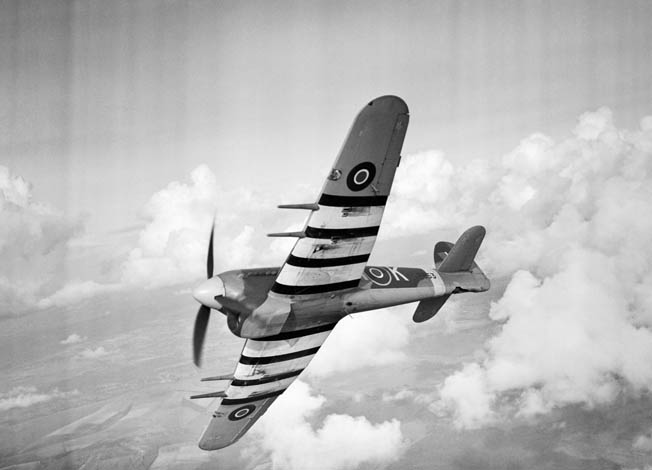
A Flawed Aircraft, a “Magnificent Gun Platform”
Squadron Leader H.S.L. “Cocky” Dundas, a 21-year-old decorated veteran of the Battle of Britain and the Bader Wing flying sweeps over France, took over command of No. 56 Squadron just before Christmas 1941. He reported, “I was, of course very excited to be commanding the first squadron to get the great new fighter, but I must say I was slightly horrified, perhaps that’s too strong a word, but was astounded by what I found. It seemed like an absolutely enormous airplane compared with the Spitfire. One sort of climbed up, opened the door, and walked in!”
Dundas was alarmed with the Typhoon’s oil, starter, and rear-view visibility problems and explained them during a Fighter Command conference at Duxford Airfield attended by Air Ministry officials and the plane’s designer. “Sydney Camm was very put out when I was arguing so vehemently that this was a bad design and we couldn’t go into action with it. I remember him saying something to the effect, ‘My bloody airplane’s so fast you don’t have to see behind you!’ Things got quite heated, I remember.”
Dundas got his way, and the Typhoons went back, one by one, for modifications. “They gradually got the oil business more or less right during the early months of 1942,” he said. “Then came the trouble with the tails.”
Pilot Officer J.G. Simpson of No. 198 Squadron found there was the chance of the Typhoon’s engine catching fire when it was started. “The real problem,” he said, “was the size of the propeller, and the torque resulting from opening the throttle, and the fact that she swung like hell to the right as you charged down the runway.”
Another experienced pilot who admitted to being intimidated by the new fighter was Sergeant A. Shannon of No. 257 Squadron. He reported, “I remember the Typhoon as being a hairy machine, and the wind would put you up long before you ever met it…. The engine was quite a huge thing … and frightened the life out of me when I just got in and opened the throttle. I felt, after the takeoff which didn’t disturb me too much, that I was up to 15,000 feet before I knew it—before I started to think! It was frightening, and I rather think it flew me rather than I flew it, for a while.”
Eventually, after more modifications and cockpit experience, pilots were able to acknowledge the Typhoon’s qualities. Pilot Officer Simpson said, “However, after a few hours it [the plane’s performance] seemed quite normal, and once you had mastered the problem of not opening the throttle too quickly, it was quite easy to fly and very stable. In fact, as an aircraft to go to war in, it was a magnificent gun platform.”
Nevertheless, the performance of the Typhoon left much to be desired. Its engine was unreliable and still down on power, and the plane lacked maneuverability and speed above 15,000 feet, largely because of its thick wing section and high wing loading. Yet the trouble-plagued fighter proved fast and surprisingly agile at low levels.
Train Busters
By September 1942, several Typhoon squadrons were stationed across southern England for defense. The threat of German daylight bomber raids had evaporated, but hit-and-run intrusions by Luftwaffe fighter-bombers, particularly the deadly Focke-Wulf 190, persisted that autumn. Typhoons went up to intercept them. The actions often finished up at low levels, where the Typhoons frequently caught and overhauled the FW-190s. Within a week of being transferred to Manston Airfield in Kent, No. 609 Squadron destroyed four FW-190s.
The RAF had finally found a plane capable of beating the FW-190, one of the most effective machines in the Luftwaffe arsenal, which, ironically, closely resembled the Typhoon. The successes kept the Typhoon operational while Camm and his Hawker team worked frantically to cure its shortcomings. During this period, a Typhoon was fatally lost when its tail broke free from the fuselage. Similar disasters followed, forcing Hawker to strengthen the joint between the fuselage and empennage. This failed to eliminate the problem, and elevator flutter was eventually identified as the actual cause. The ultimate cure involved the fitting of an enlarged tailplane.
Clearly seen as ideally suited to low-level combat, the Typhoon gained bomb-carrying capability in late 1942. The aircraft of two squadrons were eventually equipped to carry two 250- or 500-pound bombs, or two 1,000-pound bombs. Meanwhile, in 1943, Typhoon squadrons became increasingly active in offensive sorties over Nazi-occupied northern Europe. Carrying rocket projectiles, the Typhoons soon gained fame as train busters, destroying as many as 150 locomotives a month on the French and Belgian railroads. In its first few months of such operations, No. 609 Squadron accounted for 100 locomotives while losing only two planes.
Typhoons of Nos. 174, 181, 245, and 609 Squadrons ranged over France and the Low Countries, playing havoc with German installations, supply dumps, and communication lines. The British fighters’ low-level, high–speed capability gave them a high degree of immunity from both enemy fighters and antiaircraft batteries. By the end of 1943, the Typhoon had realized its full potential.
Operating in conjunction with other fighter-bomber groups based along the English south coast, Hawker Typhoons mounted with a lethal combination of rockets, bombs, and machine guns blasted German shipping in the English Channel, road convoys, bridges, tunnels, rail and highway junctions, and radar stations on the French coast. The sorties increased in frequency and severity as Allied preparations for Operation Overlord, the invasion of Western Europe by the British, American, and Canadian Armies, intensified in late 1943 and early 1944.
D-Day Air Support on Demand
By D-Day, 26 Typhoon squadrons were in action with the British 2nd Tactical Air Force led by handsome, Australian-born Air Marshal Sir Arthur “Mary” Coningham, an innovative, outspoken veteran of World War I and the North Africa, Sicily, and Italy campaigns in 1941-1944. His hard-fighting air force was in the forefront of Allied softening-up operations against the Germans before and after the massive June 6, 1944, invasion. With about 1,800 frontline aircraft and 100,000 men from seven nations, the 2nd Tactical Air Force played a crucial aerial support role in the Normandy landings, the breakouts in the summer of 1944, and the drive into Germany.
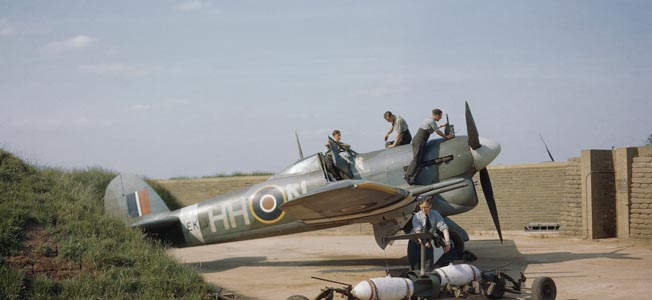
Sorties by Hawker Typhoons made a crucial contribution to the success of the Allied landings in Normandy by knocking out enemy radar stations that would have provided advance warning of the invasion fleet. On June 2, Typhoons of Nos. 98 and 609 Squadrons attacked and destroyed the radar site at Dieppe-Caudecote, while others demolished all six of the long-range radar stations south of Boulogne before D-Day. Fifteen other stations were left unserviceable so that much of the Channel coast was left without radar.
When the Allied assault troops went ashore on the five invasion beaches, Typhoons were among the first planes overhead. Forming the offensive backbone of the 2nd Tactical Air Force’s combat wings, they came into their own in Normandy as they mauled enemy defenses daily along with Allied high-level bomber formations and P-47 Thunderbolts and other fighters of the U.S. Eighth and Ninth Air Forces. Much credit for the Germans’ initial failure to build up swiftly behind the Allied beachheads was given to Coningham’s Typhoon squadrons. Operation Overlord and the hard-fought campaigns that followed proved to be the Typhoons’ finest hour as they harassed the German Army by night and day.
The first call for help from the Typhoon units on D-Day came at 7:43 am when the British 21st Army Group requested an attack on the headquarters of the German 84th Corps at Chateau la Meauffe, near St. Lo. A squadron responded immediately, bombing the target and killing most of the occupants. Three days later, on June 9, Typhoons of Nos. 174, 175, and 245 Squadrons blasted the enemy radar station at Joubourg, overlooking the Normandy beaches. Meanwhile, other Typhoon squadrons were busy on D-Day and afterward hitting German headquarters locations, troop concentrations, gun batteries, and fast E-boats threatening Allied landing craft in the English Channel.
As the British, American, and Canadian Armies broke out of the northern perimeter, more Typhoons operated close to the advancing units. The tactical concept of close air support was brought to a new height of effectiveness. Typhoon pilots were instructed to maintain standing patrols, nicknamed “cab ranks,” at an altitude of about 10,000 feet over the front lines. The planes were then called down by RAF officers attached to the ground forces to strike specified targets with guns, bombs, and rockets as the need arose. The support was lauded by the Allied soldiers struggling to dislodge stubborn enemy defenders from the tangled Normandy bocage country.
Supporting the Normandy Breakout
By mid-June, Typhoon squadrons were operating from hastily laid airstrips close to the front lines. Few German fighters tackled the Typhoons, but the 2nd Tactical Air Force suffered considerable losses from enemy ground fire and damage from clouds of dust that plagued radiators and engines. This necessitated the Typhoons’ withdrawal for repair and the fitting of special filters. There was a rapid turnover of aircraft, and many battle-damaged planes had to be returned to civilian repair shops in England.
After the Allied armies had shored up their beachheads and broken out, worsening weather limited air operations and slowed the advance. Despite the weeks of bitter struggle through the bocage and the regrouping of enemy defenses, footholds had been gained by the Allies. There was no turning back.
By the beginning of August, the breakout had been consolidated, although the crucial Goodwood offensive, started on July 18 by General Sir Miles Dempsey’s British Second Army, had ground to a halt to the east and south of the strategic city of Caen. U.S. forces began their thrust, Operation Cobra, from defensive positions on July 25. After a massive aerial bombardment, General Omar N. Bradley’s U.S. First Army assaulted the German line west of St. Lo. Making the main effort, three infantry divisions of General Joseph Lawton Collins’s Seventh Corps breached the enemy line between Marigny and St. Gilles.
Within five days, the American spearhead reached Avranches, turning the western flank of the German front and opening the door to the Brittany peninsula. The American breakout was made possible because the bulk of the German armor was now firmly emplaced in the east, opposite the British front around Caen. The town, only nine miles from the coast and a D-Day objective, was the scene of the bitterest fighting in the Normandy campaign.
The Germans launched a powerful counterattack through Mortain toward Avranches on August 6, in a bid to trap General George S. Patton Jr.’s U.S. Third Army in Brittany. Collins wheeled eastward to help defend Mortain. The Third Army, meanwhile, pushed through the Avranches gap, scoured Brittany, and then turned southward toward the River Loire, heading eastward. The British captured Mont Pincon on August 6, while Canadian, British, and Polish units moved southwest toward Falaise and Trun. Almost every day, the Typhoons were lending vital support, blasting panzers and strongpoints. On August 7, the “Tiffies” flew no less than 294 sorties. The town of Falaise, south of Caen, was a major objective that would open the way to Argentan.
Pounding the Falaise Pocket
The enemy counterattack at Mortain made early gains of a few miles against General Courtney H. Hodges’s U.S. First Army and three corps of Patton’s Third Army, but a southeastward thrust toward Falaise by the Canadian First and British Second Armies threatened to envelop the whole German armored force, SS General Paul Hausser’s Seventh Army, the Fifth Panzer Army, and General Heinrich Eberbach’s Panzer Group West, in a pocket between Argentan and Falaise. Elements of the U.S. First and Third Armies advanced northward, and the Allied pincers were closing by mid-August 1944.
Allied misunderstandings, delays, and lost opportunities contributed to the maintenance of a gap through which the disorganized German Seventh and Fifth Panzer Armies fled eastward toward the safety of the River Seine bridges. But the enemy forces, in general retreat, found the escape route through the Falaise-Argentan pocket perilous indeed as Allied tanks, artillery, and air power reacted in fury. Columns of panzers, field guns, trucks, and horse-drawn transport choked the roads and lanes, raked by Canadian, Free French, Polish, and American tanks and shellfire. Few enemy vehicles could move, and the pocket became a smoking holocaust of blazing transport, exploding ammunition, stampeding horses, and heaps of dead and wounded men.
While U.S. P-47s attacked enemy concentrations elsewhere in the area, the Battle of the Falaise Pocket proved to be a field day for the Typhoons. Speeding from their cab ranks, they incessantly scourged the retreating Germans with rockets, bombs, and blazing machine guns. Flight Lieutenant H. Ambrose of No. 175 Squadron reported, “Some of the German Army did escape, of course, but the Typhoons and some Spitfires made mincemeat of the German Army at Falaise. They just blocked roads, stopped them moving, and just clobbered them. You could smell Falaise from 6,000 feet in the cockpit. The decomposing corpses of horses and flesh—burning flesh, the carnage was terrible. Falaise was the first heyday of the Typhoon.”
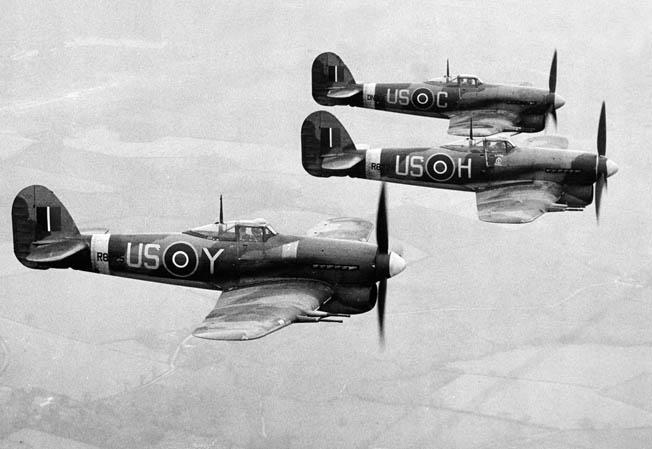
Wing Commander Desmond J. Scott of No. 486 Squadron gave a vivid report of his attack on a retreating German column: “The road was crammed with enemy vehicles—tanks, trucks, half-tracks, even horse-drawn wagons and ambulances, nose to tail, all in a frantic bid to reach cover. As I sped to the head of this mile-long column, hundreds of German troops began spilling out into the road to sprint for the open fields and hedgerows. There was no escape. Typhoons were already attacking in deadly swoops at the other end of the column, and within seconds the whole stretch of road was bursting and blazing under streams of rocket and cannon fire. Ammunition wagons exploded like multi-colored volcanoes…
“The once-proud ranks of Hitler’s Third Reich were being massacred from the Normandy skies by the relentless and devastating firepower of our rocket-firing Typhoons.”
Air Vice Marshal J.E. “Johnny” Johnson, one of the RAF’s best known heroes, called the Falaise Pocket “one of the greatest killing grounds of the war.”
Extensive though the slaughter was, the stoic Germans did not allow themselves to be trapped completely, with more than a third of Hausser’s Seventh Army eluding the Allied trap. There was no mass surrender or capitulation. Many thousands of retreating troops escaped before the corridor through St. Lambert was closed, and a goodly part of their armor got away. But little of this crossed the Seine. Despite the Allies’ slowness in closing the Falaise Pocket, the Wehrmacht suffered its greatest disaster there since Stalingrad. Its losses were 10,000 dead, 50,000 captured, and at least 500 tanks and assault guns destroyed. Several thousand vehicles were also left wrecked and burning.
Despite missed opportunities and some timidity, the Battle of the Falaise Pocket was a major Allied victory, the climactic event in the struggle to drive the enemy out of France. Two enemy armies, the Seventh and the Fifth Panzer, were literally destroyed as effective fighting units, and the Germans were not able to muster a strong defense until the Allies approached the border of Germany itself.
Falaise proved costly for the 2nd Tactical Air Force during that fateful August, with Typhoon losses reaching an all-time high mark of more than 90.
“One of the Greatest Killing Grounds of Any of the War Areas”
After the battle, the devastation in and around Falaise shocked all who witnessed it. General Dwight D. Eisenhower, the Allied supreme commander, recorded, “The battlefield at Falaise was unquestionably one of the greatest killing grounds of any of the war areas. Roads, highways, and fields were so choked with destroyed equipment and with dead men and animals that passage through the area was extremely difficult. Forty-eight hours after the closing of the gap, I was conducted through it on foot, to encounter scenes that could be described only by Dante. It was literally possible to walk for hundreds of yards at a time, stepping on nothing but dead and decaying flesh.”
It was during the Falaise action that Sir Sydney Camm’s Typhoon performed spectacularly as a close-support fighter-bomber second to none. The plane that had such a troubled development and almost never become operational proved itself as perhaps the deadliest fighter in the Allied arsenal. Typhoons were in action for the rest of the European war as the Allied armies crossed the River Rhine and pushed into Germany. Soon, however, their season was over. Production was ended in 1944, with 3,205 Typhoons having been built. All but about 20 were produced by Gloster Aircraft Company.
Meanwhile, the Typhoon’s successor, the faster, high-performance Hawker Tempest, had already been giving sterling service in the RAF. The first 50 Tempest Vs were delivered to No. 85 Group at Newchurch, Kent, in April 1944. Tempests took part in the Normandy invasion buildup, flew cab-rank patrols supporting Allied ground forces in France and Belgium, and proved immediately effective against German flying-bomb attacks on England. Between June 13 and September 5, 1944, they shot down 638 V-1 buzz bombs out of the RAF’s total of 1,771. Tempests also engaged Messerschmitt ME-262 jet fighters and downed 20 of them before VE-Day.
When production ended in August 1945, a total of 800 Tempest Mark Vs had been built. Too late to see wartime service, Tempest IIs were operational in occupied Germany, Hong Kong, India, and Malaya. The Tempest Mark VI was flown by RAF squadrons in Germany and the Middle East, and Tempest IIs remained operational in the Middle East until they were replaced by jet-propelled De Havilland Vampires in 1949.
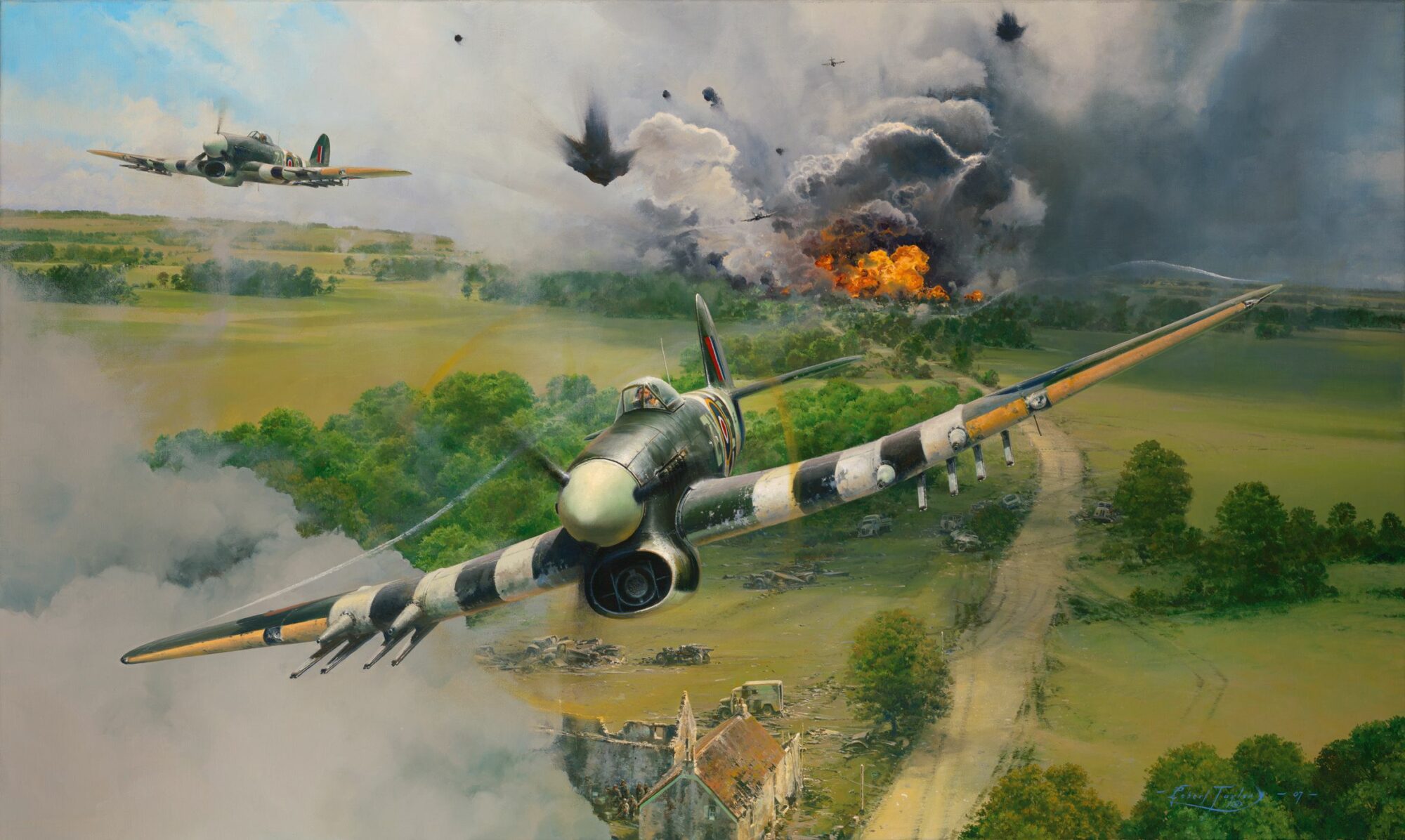
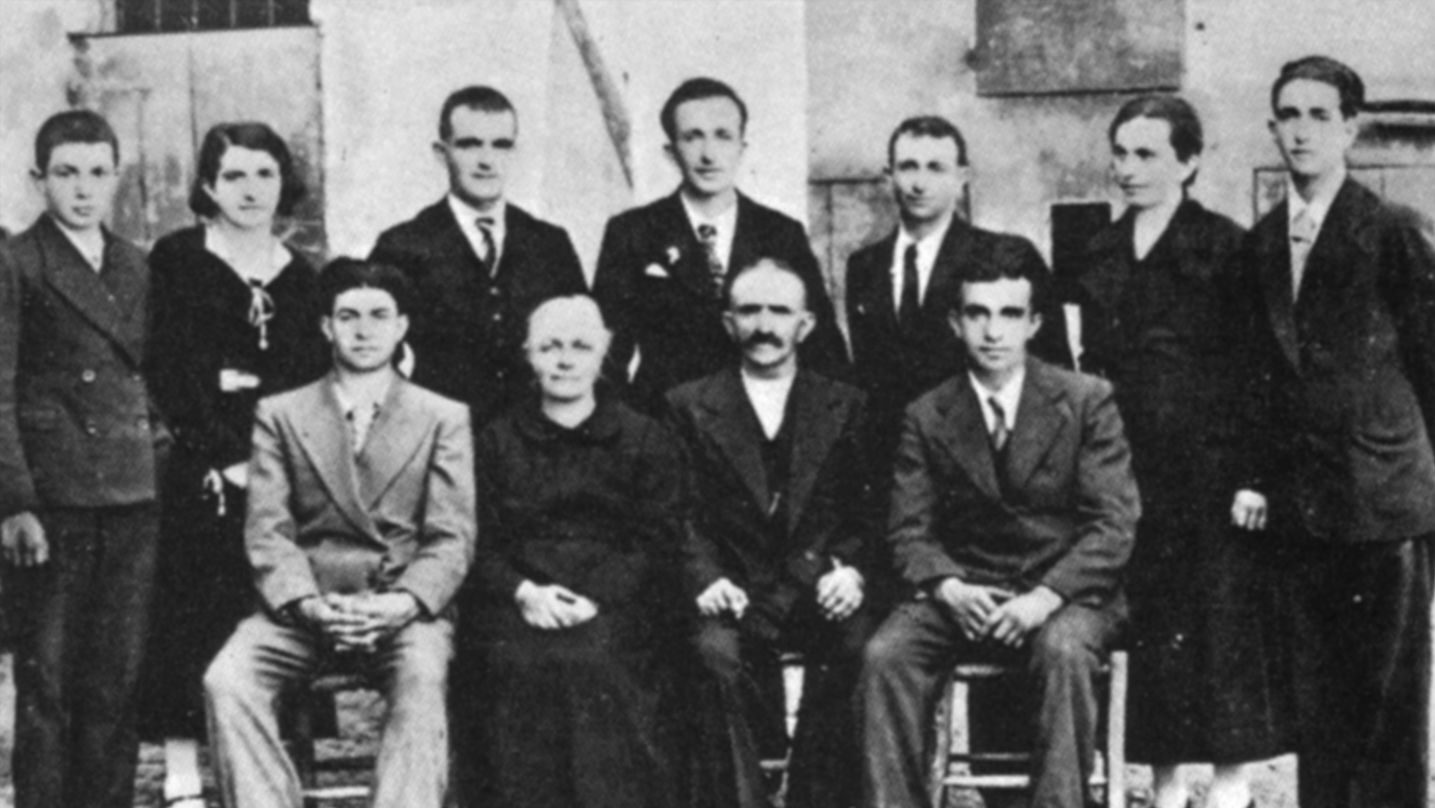
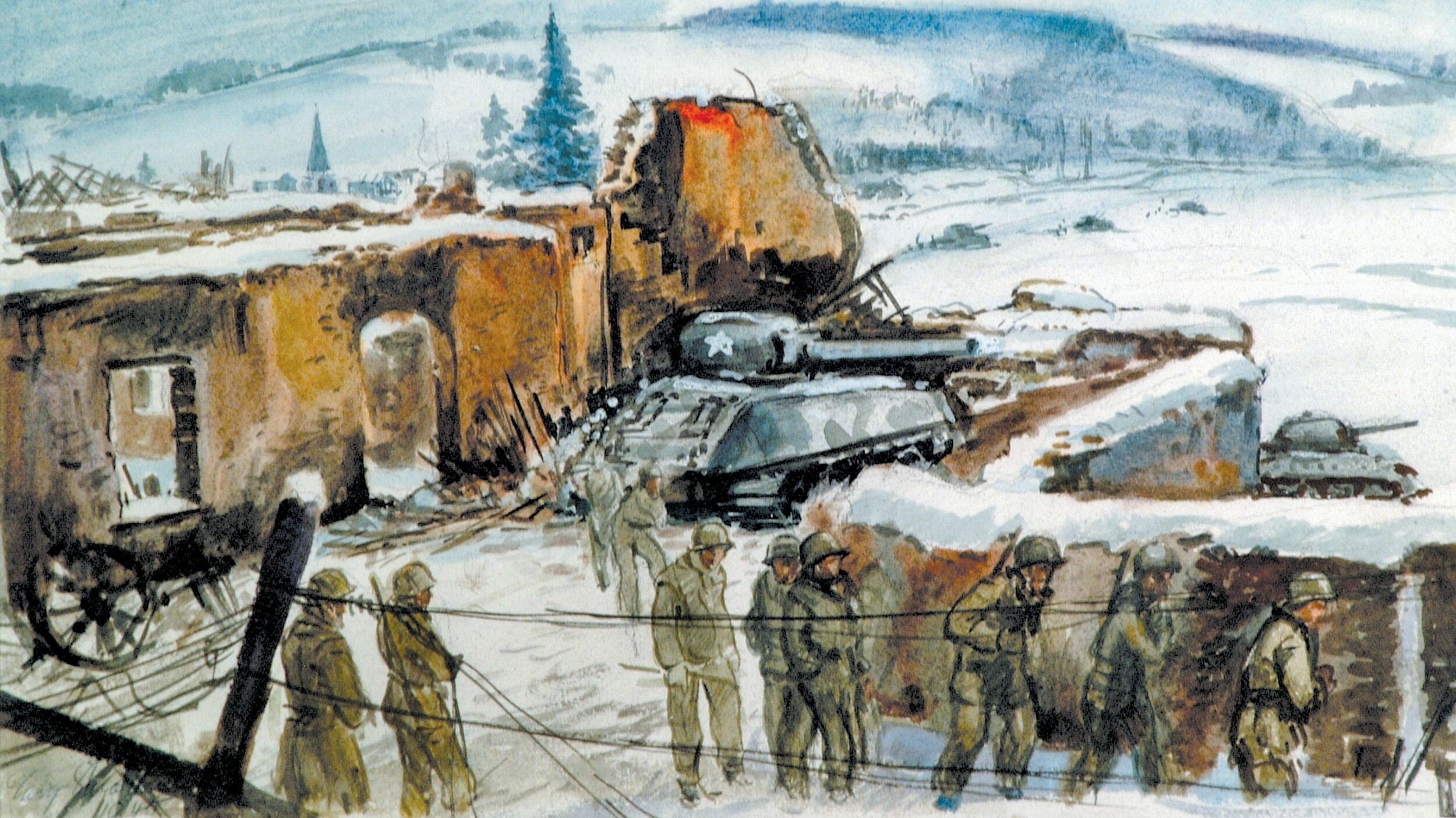
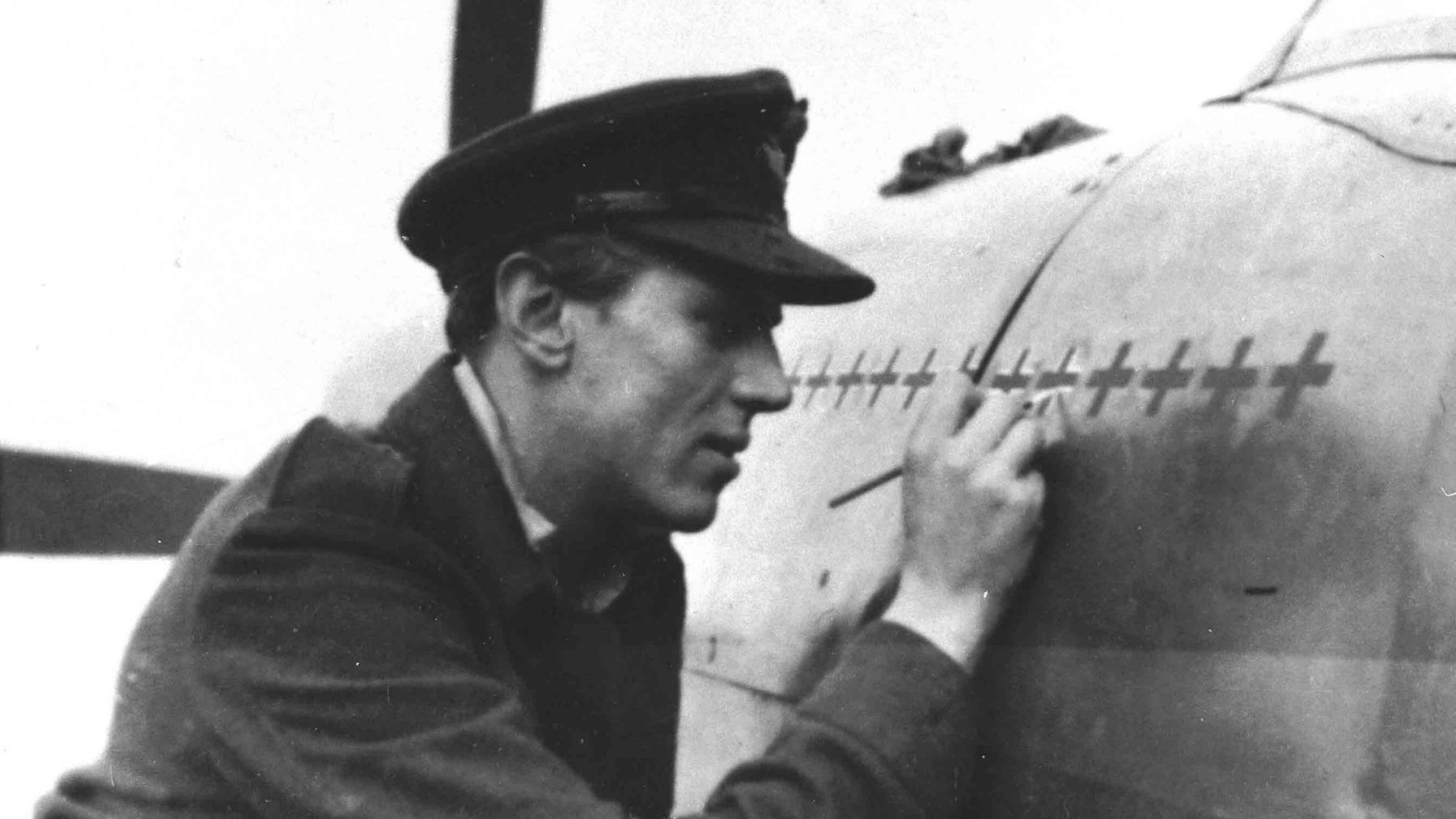
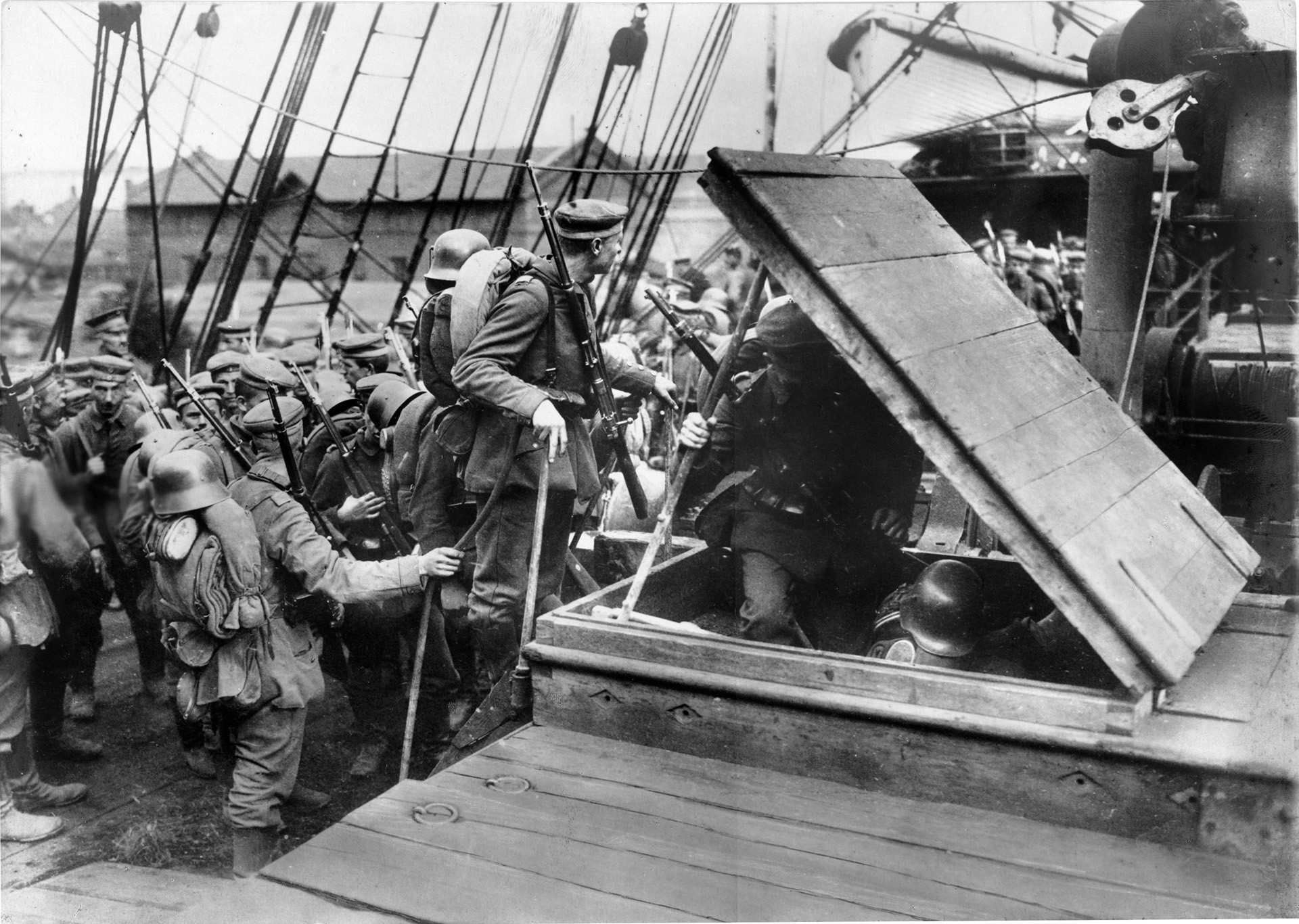
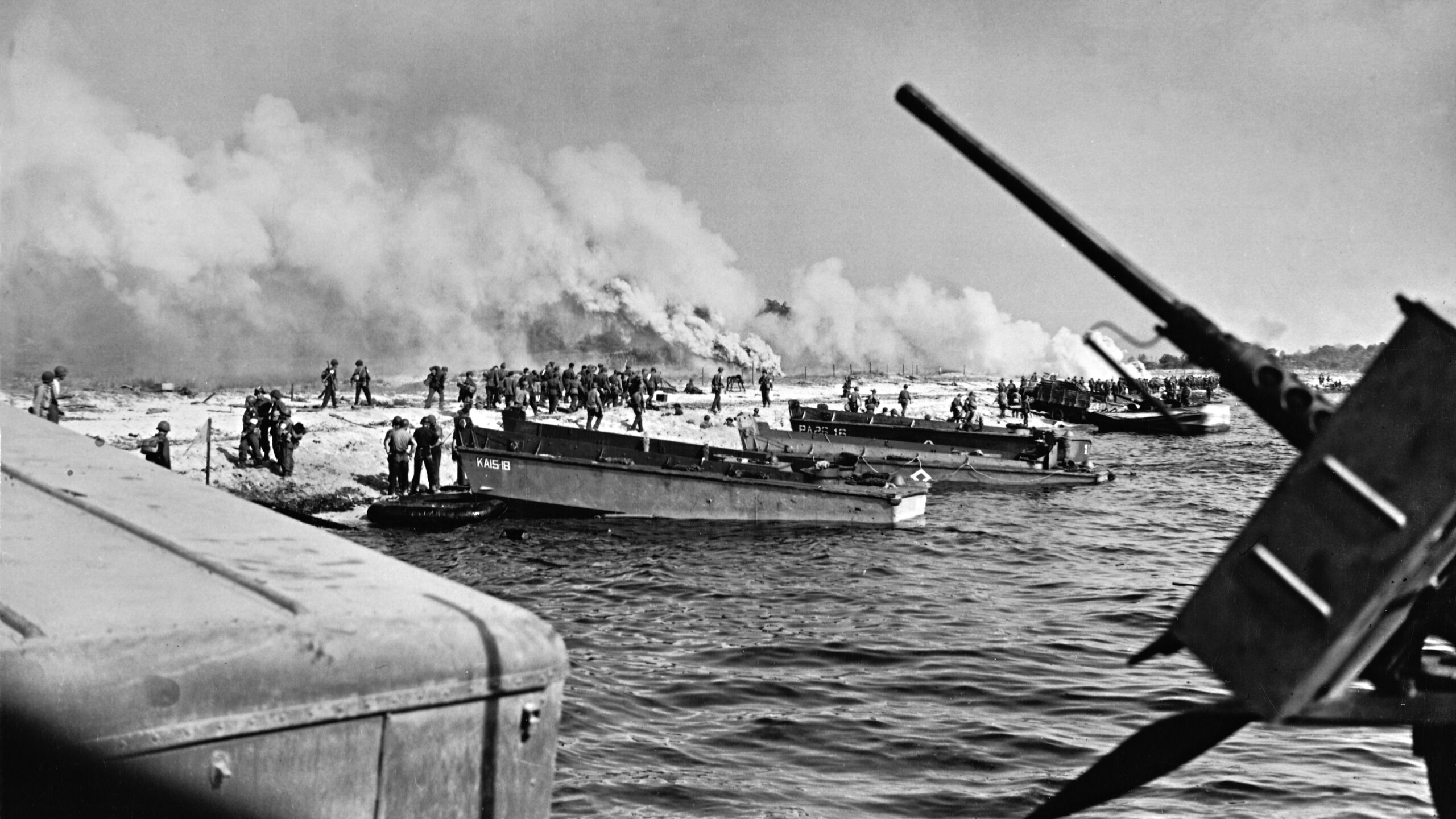
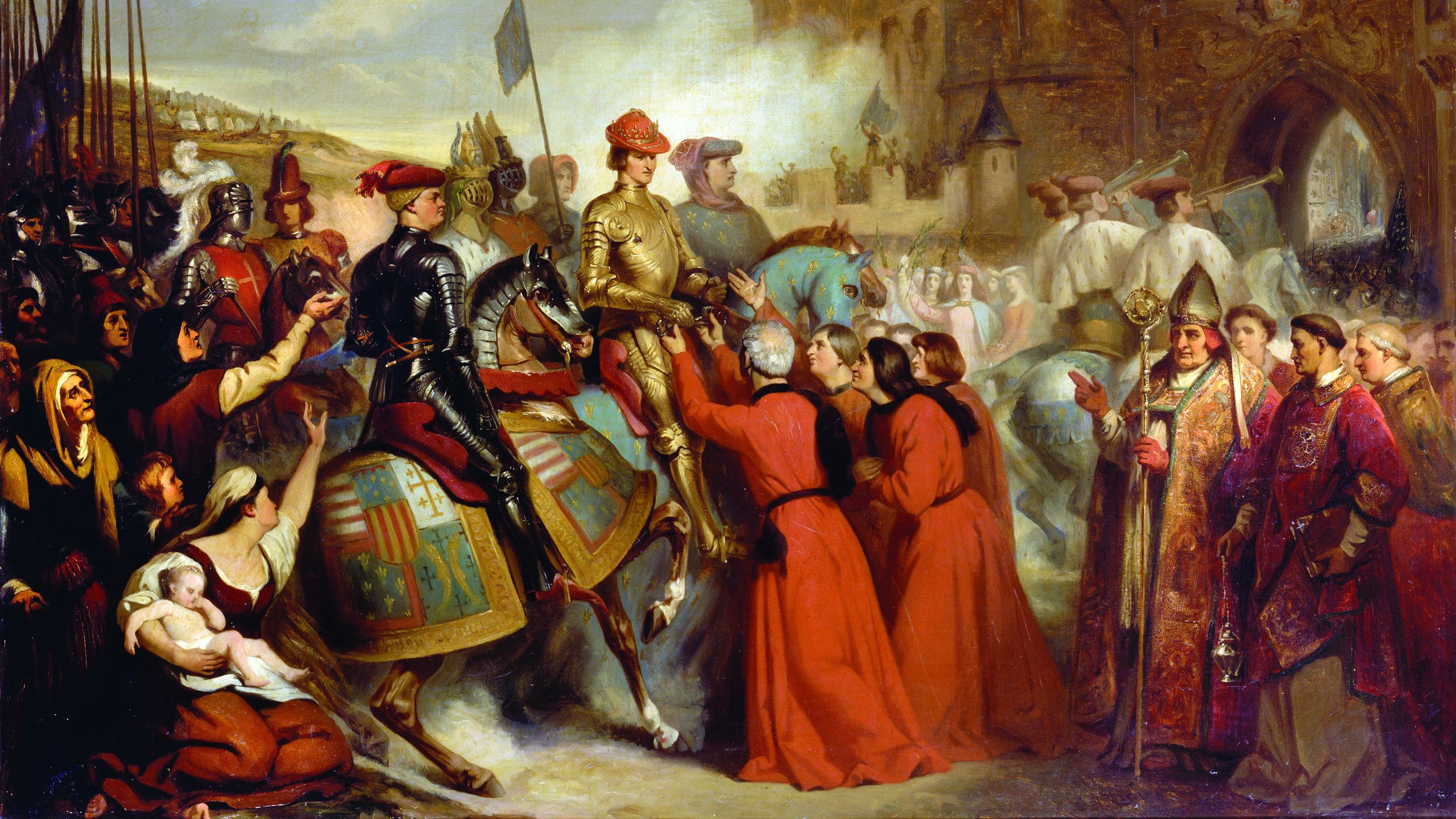
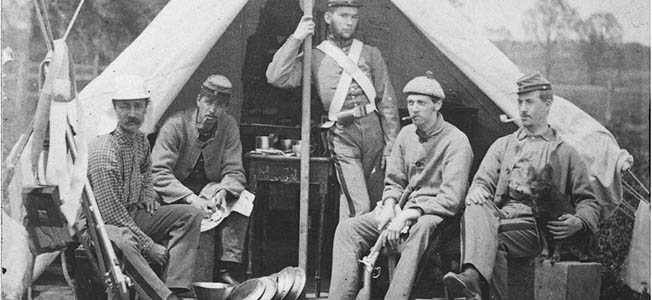
Great, many a American does not believe the RAF were the main destroyer at Falaise
Since an original typhoon cockpit assembly was found in Flowers Scrapyard near chippenham in the uk, the remains were presented to the Jet Age Museum at Gloucestershire Airport, where two individuals, Mr. Martin Clarke and Mr. John Webb were invited to restore the perforated tubular remains, this was during 1994. The challenge was accepted and a voluntary team of 15 retired skilled aviation engineers was formed over the following 27 years and now in 2021 the cockpit section is nearing completion with plans to complete the whole airframe in future years.
In tribute to all the employees at the local former Gloster Aircraft Company for building the Typhoons and also the heroes who flew the aeroplanes in combat and never returned.
This was the reason for the creation of the Gloucestershire Aviation Collection, (GAC), trading as the Jet Age Museum for those who created the aircraft that flew without propellers as these also were manufactured by the Gloster Aircraft Company.
We are requesting for assistance for original parts of Typhoons for completing this non airworthy tribute to place on display within the Jet Age Museum for future generations to witness and understand that the function of the Typhoon should never, ever happen again. Regards, Martin Clarke.